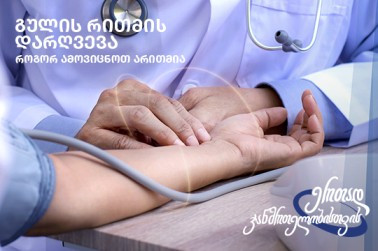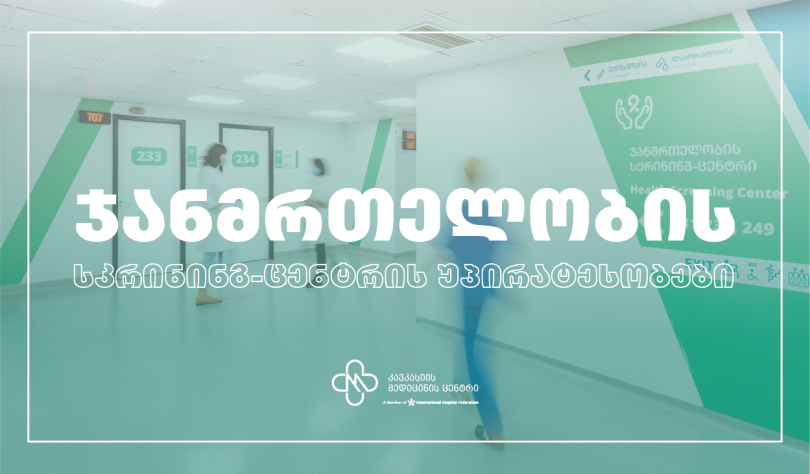


Blog
Leukemia treatment abroad
20 January 2020

Leukemia is one of the oncological diseases during which the patient has a malfunction of bone marrow. Often, leukemia is called "blood cancer", which is not entirely correct, or "leucosis" which is an outdated name. In the following article, you will learn what leukemia is, what are the types of disease and how leukemia is treated abroad.
There are three types of blood cells:
All of the mentioned are in blood plasma. Billions of new cells form in the bone marrow daily, most of which are erythrocytes. In patients with leukemia, the body produces abnormal leucocytes that do not have the function of protecting the body but live much longer than ordinary leucocytes.
In a healthy body, blood cells form gradually. Among the patients with leukemia, cells do not have time to mature and grow to normal.
The disease quickly affects the body. From the bone marrow, abnormal cells enter the lymph nodes, blood, nervous system and other organs. Leukemia destroys the organism. If the disease is not treated, death can occur in a few months or even weeks.
As in the case with other types of malignant diseases, the likelihood of this disease increases due to several risk factors. These factors include:
Many patients diagnosed with leukemia did not have the aforementioned symptoms.
Chronic leukemia cannot develop into acute and vice versa.
Depending on the type of altered cells, leukemia is divided into:
Chronic forms of myeloid and lymphocytic leukemia are usually diagnosed among adults. While acute forms of leukemia often affect children.
Chronic leukemia is benign and malignant. There are 3 stages:
Each stage is characterized by the appearance of specific symptoms.
As the abnormal bone marrow cells attack the healthy ones, the patient faces a deficiency of normal blood cells. Leukocyte deficiency weakens the protective functions of the body, so people suffering from leukemia are prone to various kinds of infections. Platelet deficiency causes various bleedings, for example, from the nose or gums. The patient begins to appear bruises and hemorrhages. Erythrocytes deficiency leads to pale skin and shortness of breath.
When the disease spreads to other organs, the patient may experience a headache, vision problems, and swelling. If the disease affects the lymphatic system, an increase of lymph nodes is observed. Some patients claim about bone and joint pain.
The appearance of one or more symptoms does not mean the presence of leukemia. These symptoms may indicate other, less serious diseases. However, if you have any ailments, you should immediately consult a doctor.
If a blood count reinforces suspicion of a disease, patients undergo a puncture - a bone marrow test. Using a needle, the doctor takes a sample from the bone marrow, which is examined in the laboratory. The puncture allows the confirmation or refusal of the diagnosis.
Further diagnosis is aimed at identifying the type of leukemia.
In the presence of affected lymph nodes, CT, MRI, ultrasound and X-ray examination are prescribed. Examination data shows the presence of abnormal cells in other organs. Analysis of cerebrospinal fluid indicates whether the nervous system is affected.
Doctors determine the characteristics of abnormal cells, their size and shape to determine the type of leukemia and prescribe further treatment. The prognosis of cure depends on the type of leukemia.
For an accurate diagnosis and treatment, contact the Caucasus Medical Center - a multidisciplinary clinic. The hospital is located in the capital of Georgia, Tbilisi, and is a regional leader in healthcare. Doctors of the medical center have extensive working experience, many of them have gained experience and qualifications in Western countries. The clinic offers medical services to adults.
Modern methods of treatment can achieve impressive results. So, about 80% of children get rid of the disease forever. In adults and older people, the prognosis is slightly worse, but half manage to achieve remission for five years or more.
Chemotherapy means taking drugs that destroy abnormal cells. Drugs are usually administered intravenously or prescribed for oral administration. Once in the body, the drug is carried throughout it.
During acute lymphoblastic leukemia, chemotherapy drugs are prescribed to the patient in order to destroy leukemic cells and achieve complete relief from the symptoms. This stage of treatment is called induction. Then the consolidation phase begins, when the drugs are administered in order to get rid of the remaining abnormal cells. As part of maintenance therapy, patients take small doses of chemotherapy drugs for several years. This completely destroys abnormal cells.
Myeloid leukemia is treated in a similar way, only patients are prescribed higher doses of drugs.
Chemotherapy treatment sometimes leads to complications - infections and bleeding, so often patients are prescribed antibiotics and other medications to help the body to cope. As a rule, side effects go away, and the body recovers after completing a course of chemotherapy.
Doctors of the Caucasus Medical Center select chemotherapy drugs for patients. The hospital is a leader in the region in the field of cancer treatment. A hospital operates in the clinic, and doctors are available around the clock. Since many patients are international residents, doctors provide them with the necessary support even after undergoing treatment.
After a course of chemotherapy, the stem cells of the patient or donor are administered to the patient during a blood transfusion. Generally, the donor cells are used, as the patient’s stem cells may be leukemic. Patients are prescribed drugs that prevent the rejection of transplanted cells. Donor cells take root in the bone marrow, where the production of normal blood cells begins.
Bone marrow transplantation is a relatively complicated method of treating leukemia (blood cancer), therefore, highly qualified doctors must carry out the procedure.
It is almost impossible to cure leukemia surgically, since abnormal cells are in the patient’s blood. Surgical intervention is limited to the introduction of a catheter in order to administrate chemotherapy drugs.
The Caucasus Medical Center is the largest hospital in the Evex chain. The network includes 19 hospitals located in different regions of Georgia. The Caucasus Medical Center is equipped with the latest equipment and designed according to international standards. The hospital performs complex surgical operations and applies the most modern methods of treatment and diagnosis. The pediatrics department operates on the basis of the center, where you can get advice from highly qualified professionals.
The hospital offers patients quality medical services at affordable prices. Leave a request on the site to undergo treatment or diagnosis. The consultant will answer all questions in detail and book an appointment for you or your child.
What is leukemia?
Leukemia is one of the most common types of malignant diseases. This is a systemic disease of the blood-forming organs, in which immature blood cells in the bone marrow accumulate. The substitution of bone marrow with abnormal cells prevents it from producing normal healthy cells. The patient begins to show symptoms of the disease - lacks healthy blood cells.There are three types of blood cells:
- Leucocytes are white blood cells responsible for the immune response;
- Erythrocytes - red blood cells that carries oxygen to organs;
- Thrombocytes (Platelets) are flat cells that are involved in blood coagulation.
All of the mentioned are in blood plasma. Billions of new cells form in the bone marrow daily, most of which are erythrocytes. In patients with leukemia, the body produces abnormal leucocytes that do not have the function of protecting the body but live much longer than ordinary leucocytes.
In a healthy body, blood cells form gradually. Among the patients with leukemia, cells do not have time to mature and grow to normal.
The disease quickly affects the body. From the bone marrow, abnormal cells enter the lymph nodes, blood, nervous system and other organs. Leukemia destroys the organism. If the disease is not treated, death can occur in a few months or even weeks.
Why does leukemia occur?
Leukemia occurs in both children and adults. Exact cause of development of the disease is unknown. Some cases of morbidity are due to a hereditary predisposition, while others are not.As in the case with other types of malignant diseases, the likelihood of this disease increases due to several risk factors. These factors include:
- Smoking. Tobacco smoking has a negative effect even on those cells that do not directly come into contact with smoke. Harmful substances that tobacco contains are distributed throughout the body. They can provoke the development of leukemia.
- The presence of other malignant diseases. Leukemia can develop while taking chemotherapy drugs, which have a negative effect on both the tumor itself and the entire body. The greatest risk arises in patients who have been treated with both, chemotherapy and radiotherapy. However, such cases are quite rare.
- Environmental factors. These factors include contact with gasoline and radiation.
- Congenital or acquired immunodeficiency. Among the people who have chromosomal abnormalities, such as Down syndrome, the risk of developing leukemia is increased.
- Hereditary predisposition.
Many patients diagnosed with leukemia did not have the aforementioned symptoms.
Types of Leukemia
Depending on how the disease progresses, leukemia is divided into two categories:- Chronic leukemia is a slow-moving disease in which blood cells appear to be mature, but are actually abnormal;
- Acute leukemia is a rapidly developing disease during which cells do not have time to grow to normal and start to divide.
Chronic leukemia cannot develop into acute and vice versa.
Depending on the type of altered cells, leukemia is divided into:
- Lymphoblastic. This type of leukemia develops from bone marrow lymphocytes. Lymphocytes - cells of the immune system that are a type of leucocytes;
- Myeloid. The disease develops from granulocytes and bone marrow monocytes. Granulocytes and monocytes are also types of lymphocytes.
Chronic forms of myeloid and lymphocytic leukemia are usually diagnosed among adults. While acute forms of leukemia often affect children.
What are the stages of leukemia?
Acute leukemia occurs in two stages:- Pre-leukemic or initial form, when the patient is just beginning to show signs of disease incidence;
- The expanded form, when the disease proceeds unevenly, the patient manifests pronounced symptoms. The expanded form is divided into the acute stage, partial remission, relapse and terminal stage.
Chronic leukemia is benign and malignant. There are 3 stages:
- Initial;
- Expanded;
- Terminal.
Each stage is characterized by the appearance of specific symptoms.
What are the symptoms of leukemia?
It is very difficult to detect leukemia at an early stage of development. Leukemia begins to manifest itself 1 to 3 months after the onset of the disease. In children, the first signs may manifest during the first weeks. The signs of the disease are very similar to the symptoms of SARS. These include:- Prostration;
- Loss of appetite;
- High temperature;
- Sharp weakness;
- Dizziness.
As the abnormal bone marrow cells attack the healthy ones, the patient faces a deficiency of normal blood cells. Leukocyte deficiency weakens the protective functions of the body, so people suffering from leukemia are prone to various kinds of infections. Platelet deficiency causes various bleedings, for example, from the nose or gums. The patient begins to appear bruises and hemorrhages. Erythrocytes deficiency leads to pale skin and shortness of breath.
When the disease spreads to other organs, the patient may experience a headache, vision problems, and swelling. If the disease affects the lymphatic system, an increase of lymph nodes is observed. Some patients claim about bone and joint pain.
The appearance of one or more symptoms does not mean the presence of leukemia. These symptoms may indicate other, less serious diseases. However, if you have any ailments, you should immediately consult a doctor.
How is leukemia diagnosed?
If leukemia (blood cancer) is suspected, blood is drawn from the patient to conduct a detailed clinical blood count. This blood count shows the exact number of all blood cells. In most patients with leukemia, the number of leukocytes in blood exceeds the norm, the number of platelets and thrombocytes, on the contrary, is below the norm.If a blood count reinforces suspicion of a disease, patients undergo a puncture - a bone marrow test. Using a needle, the doctor takes a sample from the bone marrow, which is examined in the laboratory. The puncture allows the confirmation or refusal of the diagnosis.
Further diagnosis is aimed at identifying the type of leukemia.
- A cytochemical study helps to determine the nature of abnormal cells;
- Immunological research allows to study the structure of the immune system;
- Genetic research allows to study the structure of chromosomes.
In the presence of affected lymph nodes, CT, MRI, ultrasound and X-ray examination are prescribed. Examination data shows the presence of abnormal cells in other organs. Analysis of cerebrospinal fluid indicates whether the nervous system is affected.
Doctors determine the characteristics of abnormal cells, their size and shape to determine the type of leukemia and prescribe further treatment. The prognosis of cure depends on the type of leukemia.
For an accurate diagnosis and treatment, contact the Caucasus Medical Center - a multidisciplinary clinic. The hospital is located in the capital of Georgia, Tbilisi, and is a regional leader in healthcare. Doctors of the medical center have extensive working experience, many of them have gained experience and qualifications in Western countries. The clinic offers medical services to adults.
What is the prognosis of cure?
The prognosis of cure is determined individually. Some factors reduce the chances of a cure.- A large number of leucocytes in a blood count worsens the prognosis of cure, since it can indicate the spread of the disease;
- Leukemia in young children up to a year is difficult to treat;
- Relapse of leukemia increases the risk of an adverse outcome;
- The spread of the disease to other systems also adversely affects the prognosis of cure.
Modern methods of treatment can achieve impressive results. So, about 80% of children get rid of the disease forever. In adults and older people, the prognosis is slightly worse, but half manage to achieve remission for five years or more.
How is leukemia treated abroad?
The main method of leukemia treatment is chemotherapy. Radiotherapy and surgical interventions are quite limited.Chemotherapy abroad
Chemotherapy means taking drugs that destroy abnormal cells. Drugs are usually administered intravenously or prescribed for oral administration. Once in the body, the drug is carried throughout it.
During acute lymphoblastic leukemia, chemotherapy drugs are prescribed to the patient in order to destroy leukemic cells and achieve complete relief from the symptoms. This stage of treatment is called induction. Then the consolidation phase begins, when the drugs are administered in order to get rid of the remaining abnormal cells. As part of maintenance therapy, patients take small doses of chemotherapy drugs for several years. This completely destroys abnormal cells.
Myeloid leukemia is treated in a similar way, only patients are prescribed higher doses of drugs.
Chemotherapy treatment sometimes leads to complications - infections and bleeding, so often patients are prescribed antibiotics and other medications to help the body to cope. As a rule, side effects go away, and the body recovers after completing a course of chemotherapy.
Doctors of the Caucasus Medical Center select chemotherapy drugs for patients. The hospital is a leader in the region in the field of cancer treatment. A hospital operates in the clinic, and doctors are available around the clock. Since many patients are international residents, doctors provide them with the necessary support even after undergoing treatment.
Bone marrow transplantation
Bone marrow, i.e. stem cell transplantation, is performed when the bone marrow needs recovery. This method allows doctors to combine high-dose chemotherapy with radiotherapy.After a course of chemotherapy, the stem cells of the patient or donor are administered to the patient during a blood transfusion. Generally, the donor cells are used, as the patient’s stem cells may be leukemic. Patients are prescribed drugs that prevent the rejection of transplanted cells. Donor cells take root in the bone marrow, where the production of normal blood cells begins.
Bone marrow transplantation is a relatively complicated method of treating leukemia (blood cancer), therefore, highly qualified doctors must carry out the procedure.
Radiation therapy and surgery abroad
Radiation therapy is rarely used. As a rule, it is prescribed during the damage to the nervous system or in combination with chemotherapy to destroy the remaining leukemic cells.It is almost impossible to cure leukemia surgically, since abnormal cells are in the patient’s blood. Surgical intervention is limited to the introduction of a catheter in order to administrate chemotherapy drugs.
The Caucasus Medical Center is the largest hospital in the Evex chain. The network includes 19 hospitals located in different regions of Georgia. The Caucasus Medical Center is equipped with the latest equipment and designed according to international standards. The hospital performs complex surgical operations and applies the most modern methods of treatment and diagnosis. The pediatrics department operates on the basis of the center, where you can get advice from highly qualified professionals.
The hospital offers patients quality medical services at affordable prices. Leave a request on the site to undergo treatment or diagnosis. The consultant will answer all questions in detail and book an appointment for you or your child.
Other Blogposts

Explore Now
სიცოცხლის რიტმი: რა უნდა ვიცოდეთ გულის არითმიის შესახებ?
18 July 2024
არითმია, ანუ არარეგულარული გულისცემა, გულის ნორმალური რიტმის ნებისმიერი ტიპის დარღვევას ეწოდება. ფიზიოლოგიურად გულისცემის სიხშირე შეიძლება გაიზარდოს ფიზიკური აქტივობის შესაბამისად ან შემცირდეს მოსვენებისა და ძილის დროს. ასევე, გულისცემის გამოტოვების იშვიათი შეგრძნება, უმეტესწილად არ უკავშირდება პათოლოგიურ ცვლილებებს, თუმცა, ხშირი არარეგულარული რითმი ძირითადად მიგვანიშნებს არითმიებზე, რა დროსაც გულისცემის პათოლოგიური ცვლილების გამო, ორგანოები ვერ მარაგდება საკმარისი რაოდენობის სისხლით.

Explore Now
ბავშვი ინსულტის დიაგნოზით: 13 წლის მოზარდის განკურნების ისტორია
05 October 2022
2022 წლის დადგომას ველოდით. ალექსანდრესთან ერთად ნაძვის ხის აწყობას ვგეგმავდით. მოულოდნელად, მისი ოთახიდან უცნაური ხმები შემომესმა. სასწრაფოდ შევაღე კარი და ვნახე სრულიად გაშეშებული ჩემი შვილი, რომელიც ერთ წერტილში იყურებოდა და უემოციოდ იჯდა. მან ჩვენი ყურადღების მიქცევა მხოლოდ ხელების ოდნავი მოძრაობით შეძლო.

Explore Now
Benefits of a screening center
15 November 2021
Caucasus Medical Center plays a huge role in the development of the screening center. Here, diagnostics are performed using modern high-tech devices and the error is minimized. Also, the screening center is distinguished by the team of multidisciplinary doctors. With their joint involvement, the treatment issues of the patients are discussed.



